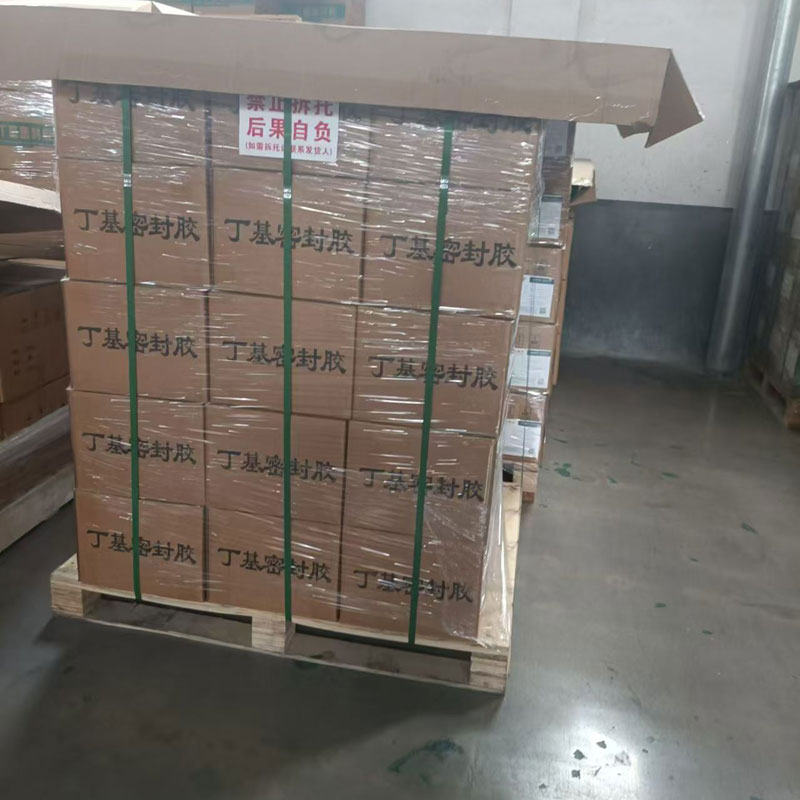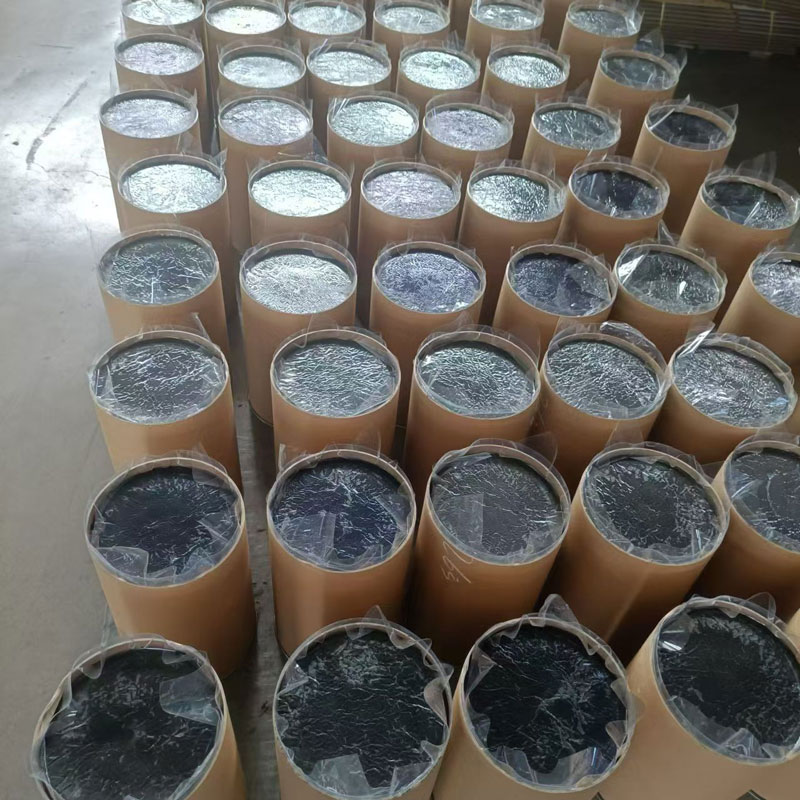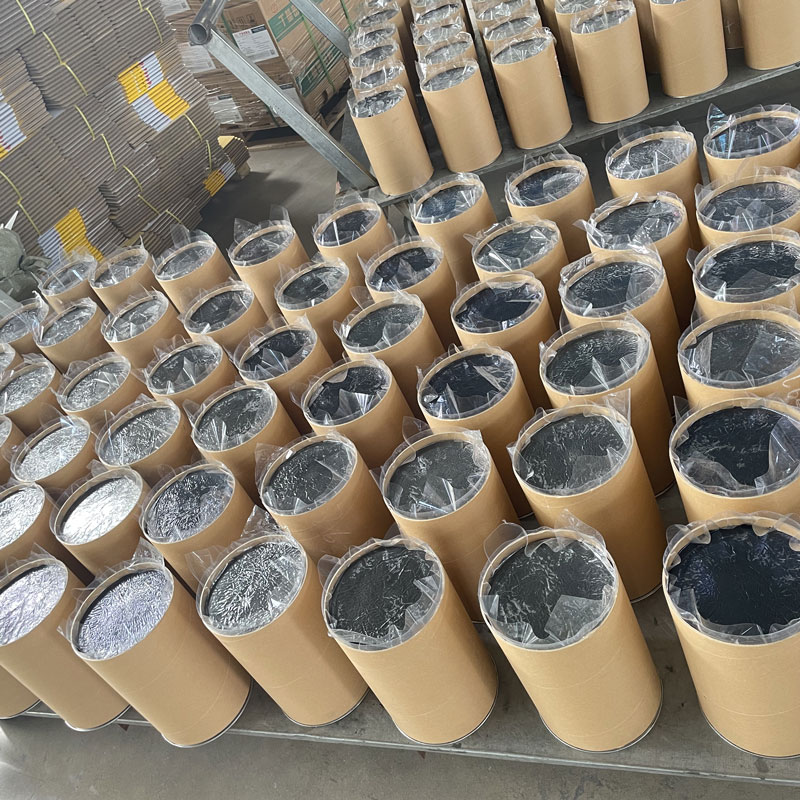Hot Melt Butyl Sealant for Double Glazed
Model No.: HH 801
Brand: HH
Place of Origin:China
Wet: 28kg/bag
Payment Type:LC,T/T
Incoterm:FOB,CFR,CIF,EXW
Min Order:1 bag
Port: Qingdao,Shanghai,Tianjin
In the world of energy-efficient windows, hot melt butyl sealant for double glazed units plays a silent yet critical role. While the glass may steal the spotlight, it’s this specialized sealant that keeps your home comfortable, condensation-free, and thermally efficient for years.
Let’s break down what makes hot melt butyl sealant the ultimate choice for double-glazed IGUs (insulated glass units), and why manufacturers, installers, and even DIYers are turning to it as their go-to spacer seal.
? What Is Hot Melt Butyl Sealant for Double Glazed Units?
Hot melt butyl sealant is a high-performance, thermoplastic rubber-based compound used in the primary seal of double glazed or insulated glass units. Applied hot (typically 110°C–140°C), it quickly cools to form a durable, flexible, and moisture-resistant seal.
Used in conjunction with secondary sealants like silicone or polysulfide, the hot melt butyl sealant for double glazed systems serves as the first line of defense against vapor ingress and gas leakage.
? Fun Fact: Butyl sealants offer one of the lowest water vapor transmission rates (WVTR) among all IGU sealants.
? Key Benefits of Using Hot Melt Butyl Sealant for Double Glazed Systems
✅ Superior Moisture Barrier
The primary role of hot melt butyl sealant is to block moisture—and it excels at that. It maintains its barrier even under temperature fluctuations from -40°C to +90°C.
✅ Excellent Adhesion to Glass & Spacers
It forms a permanent, tacky bond to aluminum, stainless steel, and even warm edge spacers—ensuring zero slippage or detachment over time.
✅ Low Gas Permeability
Ideal for argon-filled or krypton-filled IGUs, it helps maintain the thermal integrity of the unit for over a decade.
✅ Fast Application & Clean Edges
It’s compatible with automated IGU production lines, dispensing cleanly and cooling quickly for high-volume output.
✅ Cost-Efficient & Long-Lasting
While it offers premium performance, hot melt butyl sealant is also highly economical per unit due to its low dosage and long service life.
? Where It’s Used: Applications of Hot Melt Butyl Sealant
Residential & Commercial Double Glazing
Curtain Wall Glass Facades
Automotive Insulated Glass
Soundproof Glass Units
Greenhouse & Solar Panel Glazing
Whether you're building a skyscraper in Dubai or a passive house in Norway, using hot melt butyl sealant for double glazed systems ensures unmatched insulation performance.
?️ How to Apply: Tips for Optimal Performance
Preheat the sealant to the recommended 120–140°C in the butyl applicator.
Ensure clean surfaces – both the glass edge and the spacer should be dust-free and dry.
Apply uniformly with continuous pressure to eliminate air gaps.
Pair with a secondary sealant (like silicone or polyurethane) for structural strength.
Cure at room temperature – no special oven needed.
? Tip: For argon-filled units, test gas retention after sealing to ensure optimal barrier integrity.
? User Reviews: Real Feedback from the Field
⭐⭐⭐⭐⭐
“We’ve used this hot melt butyl sealant on over 10,000 IG units. No fogging, no edge leaks. Works perfectly with our automated lines.”
— James W., IGU Manufacturer, Germany
⭐⭐⭐⭐
“I was skeptical at first, but after 2 winters and zero condensation, I’m a believer. Great adhesion, smooth application.”
— Linda T., Home Renovation Contractor, Canada
⭐⭐⭐⭐⭐
“We switched from cold-applied butyl to hot melt butyl sealant for double glazed windows—it halved our production time and improved thermal performance.”
— Zhang Wei, Window Factory Supervisor, China
? Why It Matters: The Long-Term Value of Choosing the Right Sealant
Choosing the right hot melt butyl sealant for double glazed units isn't just a technical decision—it's a long-term investment in energy efficiency, comfort, and reliability. When a window fogs or fails, it's often because of sealant degradation. Avoid callbacks and warranty issues by using a sealant that’s trusted globally.
✅ Features Checklist Before You Buy
| Feature | Why It Matters |
|---|---|
| Low WVTR (<0.5 g/m²/day) | Keeps IGUs fog-free for years |
| Excellent UV and ozone resistance | Maintains flexibility and adhesion long-term |
| Compatible with desiccant spacers | Ensures no chemical interference |
| Stable under UV & thermal cycles | Suitable for harsh environments |
| REACH & RoHS compliant | Environmentally safe and regulation-friendly |
? Not sure which hot melt butyl to choose? Message us your IGU specs and we’ll match the ideal formulation.
? Frequently Asked Questions
Q: Can hot melt butyl sealant be used alone without a secondary seal?
A: While technically possible, industry standards recommend using a secondary seal (usually silicone or polyurethane) for structural strength and longevity.
Q: What is the shelf life?
A: Unopened, it typically lasts 12–24 months depending on storage conditions.
Q: Is it suitable for warm-edge spacers?
A: Absolutely. Most modern hot melt formulations are engineered to adhere to warm-edge materials including stainless steel, TPS, and composite spacers.
? Final Thoughts: Build Better, Seal Smarter
If you're in the glass manufacturing or window installation business, using hot melt butyl sealant for double glazed units is not just an upgrade—it’s the industry standard. Its unmatched combination of speed, adhesion, moisture resistance, and thermal stability makes it a must-have in every IGU production line.
? Looking to cut costs, reduce failures, and improve customer satisfaction? Start by switching to a reliable hot melt butyl sealant today.
2.Product advantages
(1)This hot-melt butyl sealant is designed for insulating glass, offering excellent adhesion to glass and aluminum frames, with high airtightness.
(2)It features robust UV resistance.
(3)Suitable for a wide range of temperatures, making it versatile in various applications.
3.Product parameters are as follows
Test ltems | Test Results |
Color | Black |
Specific Gravity | 1.20-1.30 g/cm3 |
Solid Content | 100% |
Temperature Resistant Range | -40℃~130℃ |
Maximum Temperature Bearable | 160℃ |
Working Temperature Range | -20℃-80℃ |
Shear Strength | 0.13Mpa |
Water Vapor Transmission Rate | 0.90g/m2 d |
Thermal Weight Loss | 0.1% |







